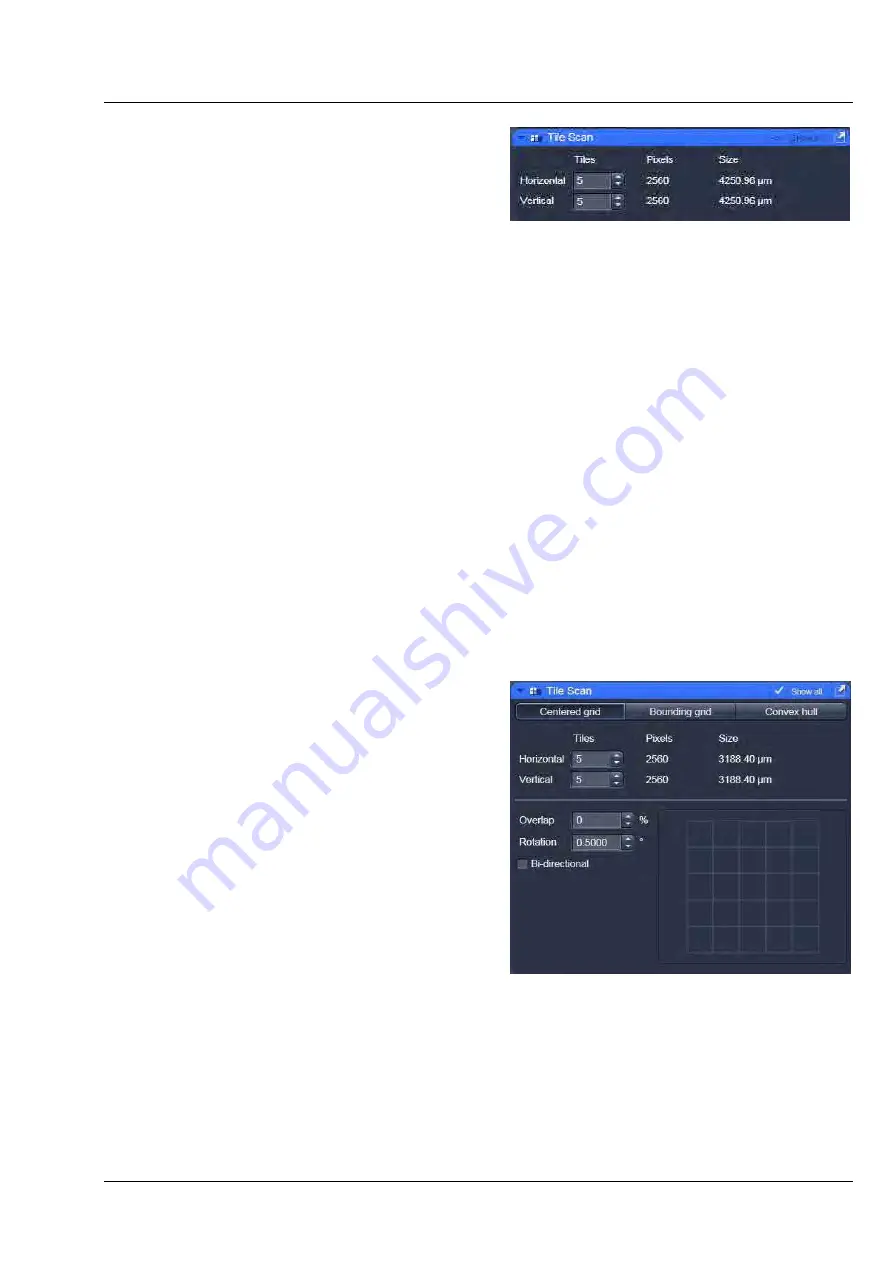
LSM 710 and LSM 780
LEFT TOOL AREA AND HARDWARE CONTROL TOOLS
Systems
Acquisition Tab
Carl Zeiss
02/2010 M60-1-0025
e
95
5.2.15
Tool Group Multidimensional
Acquisition: Tile Scan
This function permits a frame to be created as an
overview image of the specimen. The size of the
final tiled image depends on the settings for the
image format set in the
Acquisition Mode
tool
and the number of tiles.
The application of the
Tile Scan
function requires
an objective with a minimum magnification factor
of 2.5x.
Indicate the number of
Tiles
in
Horizontal
and
Vertical
direction. A maximum of 100 tiles can be set.
According to image format the number of
Pixels
changes. According to the objective used for imaging
the
Size
of the Tile Scan changes.
In case the stage does not move exactly horizontal to the scan field a
Rotation
value can be set to
correct for this (available in
Show all
mode). This can either be calibrated beforehand using a grid slide
or any other specimen which displays clearly visible structures in horizontal direction. Acquire smaller tile
scans to see the effect of a specific value for Rotation until you find the right one. This value should be
taken for the Rotation. Alternatively use the Tile Scan Rotation Macro which provides an automatic
Rotation calibration function. Take over this value to the main software before acquiring the tile scan.
When
Bi-directional
is active (available in
Show all
mode) the image acquisition is performed also on
the horizontal backwards movement of the stage.
The Tile scan is created around the absolute starting position of the stage.
Tile Scan with StitchArt plus
The StitchArt plus license allows creating tile scans
with overlap. The overlap can be used to stitch
singe 2D images or Z-Stacks three-dimensional.
Centered grid:
The current position will be the
center of the tile scan.
Fig. 85
Tile Scan tool
Fig. 86
Tile Scan tool with StitchArt plus






























